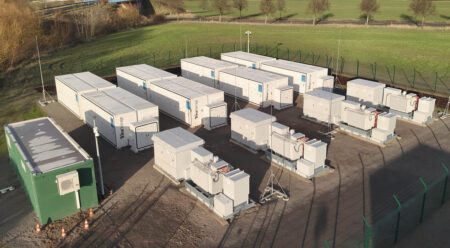
State-of-the-art: assessment of batteries
The relevance of battery energy storage systems (BESS) continues to increase due to the surge in electric vehicle uptake and the fundamental shift underway in European energy supply. As a result, the need to better understand battery storage is pivotal, yet very often this understanding is lacking.
Lift the lid and a BESS has electronics, battery management systems, auxiliar periphery, sensors, relays, cooling and heating circuits, “smart” and “not so-smart” insulation, filling and stuffing materials, cables, hoses and fans of all sorts and all with the aim to have the battery cells operate smoothly together. Each lithium-ion battery cell chemistry, such as lithium iron phosphate (LFP) or nickel manganese cobalt (NMC), has its own peculiar susceptibilities to both external and internal conditions. Manufacturers quite rightly adapt and create their own settings and configurations to optimize cells, be that for high or low tem perature, high charging power, overnight charging, and a range of other particularities. It should therefore be no surprise that given the sheer magnitude of additives and patented materials, gels, electrolytes, electrode coatings, and many other components involved, that each BESS degrades in quite a different manner to every other. However, this still comes as a surprise to many. While most PV parks and modules have 24/7 surveillance, most batteries and their quality and safety parameters are not monitored by the owners or operators.
Monitoring is a must
It is likely that as BESS applications grow in number, independent battery monitoring will become the standard. Each and every BESS could already be equipped with the necessary sensors to allow for a proper health assessment, lifetime prediction, and safety and anomaly detection. However, for the understanding of this battery sensor data, including deg radation, this data must be analyzed and made readily available to the owner. There are a number of reasons why the data analysis must be automated; available workforce being a significant one. According to the European Union, a total of at least 800,000 jobs in the battery value chain will be required from 2025 onwards. Already, the hunt for trained and skilled battery experts that are also able to write scalable software, conduct data analysis, bring the skills for machine learning, and have qualifications in electrochemistry is extremely difficult. Recent headlines indicating that battery makers like Tesla are being forced to provide “CFO like salaries” for battery engineering hires are worrying.
Neither battery manufacturers, operators, nor users can say with certainty how they should handle batteries to get the maximum of the critical raw materi als used and thus have the greatest possi ble positive impact on the environment. To enable this potential, we must learn to measure BESS state-of-health (SOH), understand risk management, and prepare
for degradation issues.
SOC and SOH
Why is the seemingly trivial determination of a battery system’s state of charge (SOC) already challenging? First, it is essential to understand what SOC means. SOC is charge content per maximum capacity; when a 200 ml glass is filled with 100 ml of liquid, the glass results in 50% SOC. The trouble in determining this amount is rooted in the fact that SOC must be estimated indirectly by the battery management system (BMS). It can only measure the voltage (corresponding to the height of the liquid in the glass) and current (the flow of liquids in milliliters per second) through each of the hundreds of cells, and using complex lookup tables and sophisticated electrochemical considerations for converting that into a SOC. This leads to the suspicion that the displayed SOC is often incorrect. Large investments are made into more efficient power electronics and higher energy density, but it is near impossible to say with certainty what the SOC of batteries are today. And without knowing that, estimation of values like SOH becomes difficult. Luckily, continuous improvement of the models and algorithms used for estimating SOC, SOH and other parameters is underway. But there will always be fundamental technical challenges that will be difficult to overcome. It is instrumental for BESS owners and operators to get a basic understanding of the challenges manufacturers and monitoring providers are facing.
Keeping batteries alive
It is also important to understand how factors such as temperature, age, and rates of charge or discharge influence degradation and how it can be better managed. With many factors affecting degradation, it is the SOC that significantly impacts battery lifetime – resulting in problems like lithium plating, thermal runaway, and sudden depletion events. These issues have frustrating and wasteful consequences. But if well managed, battery stress can be reduced and lifetime increased by 10% to 50%, and in some extreme cases even doubled. Stress factors such as capacity fade and resistance increase are hard to measure via quick tests or electronics. However, by implementing proper data acquisition, analysis, and asset management systems they can be identified over time. Adhering to original equipment manufacturer recommendations, in addition to independently tracking inhomogeneity, reversible and irreversible and balancing effectiveness, is integral to ensuring the full potential of a battery asset can be achieved. If batteries are left inadequately monitored and mismanaged, it is estimated that at least 2 million tons of batteries will be discarded prematurely. Ensuring the most sustainable and highest quality batteries and battery-run products must be taken seriously. Manufacturers and consumers may develop more economically efficient battery systems by unlocking valuable information in the field data, further reducing operational risks and establishing second-use possibilities.
Claudius Jehle for PV Magazine, 05.10.2022


